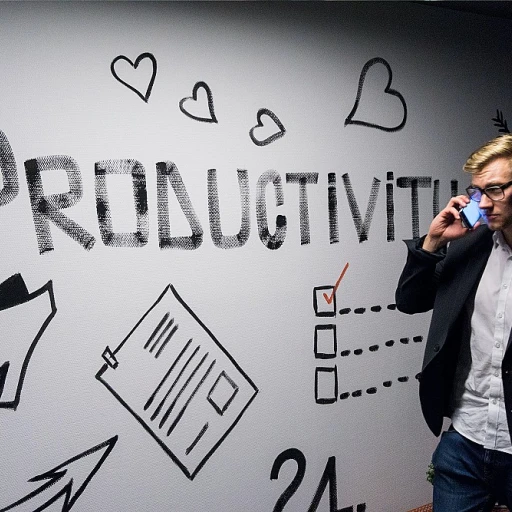Understanding the Employee Lifecycle
The Employee Lifecycle: A Journey Through Your Company
The employee lifecycle is like a journey through your company. It's a process that starts with recruitment and goes all the way to when an employee leaves. Each stage in this cycle is important, shaping the employee experience and impacting your organization. Let's break down what this lifecycle looks like and why it matters.
Stages of the Employee Lifecycle
Think of the employee lifecycle as a series of stages that an employee goes through during their time with your company. These stages include:
- Recruitment: Finding the right talent to join your team.
- Onboarding: Welcoming new employees and helping them settle in.
- Development: Providing opportunities for growth and learning.
- Retention: Keeping your top talent engaged and satisfied.
- Separation: Managing the process when an employee leaves.
Each stage of this cycle is crucial for creating a positive employee experience and ensuring your company thrives.
Why the Employee Lifecycle Matters
Managing the employee lifecycle effectively can lead to better employee engagement, higher retention rates, and a stronger company culture. When employees feel valued and supported at each stage, they are more likely to stay and contribute positively to the organization.
For example, effective performance management strategies can boost employee morale and productivity. Similarly, a well-structured onboarding process helps new hires feel welcome and ready to contribute.
Feedback and Continuous Improvement
Feedback is a vital part of the employee lifecycle. Regular feedback helps employees understand their performance and areas for improvement. It also gives management insights into how to enhance the employee experience. Implementing feedback loops at each stage ensures continuous improvement in lifecycle management.
By understanding and optimizing the employee lifecycle, companies can create a thriving environment where employees are motivated to succeed. This process not only benefits the employees but also contributes to the overall success of the organization.
Effective Recruitment Strategies
Bringing a New Hire Onboard: Setting the Stage
Getting recruitment right is only half the battle. Once talent is identified and welcomed, quickly turning them into a productive part of the team is vital. The onboarding process should aim to introduce and immerse employees seamlessly into the company culture. It is during this stage that new hires form their first impressions, making it a critical time for success. Imagine this: Sarah is excited about starting her new job at an innovative tech company. As she navigates her first day, she goes through a well-structured onboarding stage using effective onboarding software. It provides her with a detailed, user-friendly experience that covers everything from the company's background to her specific responsibilities. The software acts as a guide, ensuring she feels informed and valued right from the start. By the end of her first week, Sarah feels integrated, appreciated, and eager to contribute.- Use Onboarding Software: Tools designed to streamline and personalize the onboarding journey can dramatically improve a new employee's experience.
- Create a Buddy System: Pairing new hires with current employees helps them adjust socially and understand the company's life quickly.
- Feedback and Adjustment: An essential part of the onboarding cycle is regular feedback. Address concerns and adapt the process to suit different learning styles and personalities.
Fostering Growth: The Development Stage
Now that employees are settled, it’s time to focus on their skills development. This is an ongoing experience rather than a one-off event. A company that invests in its employees’ personal and professional growth reaps the benefits in engagement and satisfaction. Employees feel like they are not just working a job but are valued contributors to the life of the company. Here’s a story worth noting: Jack, a junior developer, joins a company known for its robust development programs. Engaging in a variety of training sessions coupled with real-world projects, Jack finds new confidence and expertise in areas he didn't initially expect. Performance feedback from both management and peers helps him to continually refine his skills. Over time, this commitment to growth leads Jack to be promoted, further cementing his loyalty to the organization.- Offer Continuous Learning: Providing learning opportunities shouldn't stop post-onboarding. Whether it's workshops, seminars, or online courses, keep the learning cycle alive.
- Set Achievement Goals: Clear, achievable development targets keep employees motivated and demonstrate that their growth is also a company goal.
- Use Performance Management Tools: These help in tracking progress and provide objective metrics to strategize growth better.
Onboarding for Success
Smooth Beginnings for New Employees
Starting a new job is like the first day of school all over again. It's exciting, nerve-wracking, and full of possibilities. For companies, this is a golden opportunity to make a lasting impression. The onboarding process is a critical stage in the employee lifecycle, setting the tone for the entire employee experience.
When done right, onboarding helps new hires feel welcomed and valued. It’s not just about paperwork and procedures; it’s about integrating them into the company culture and making them part of the team. Here’s how to make this stage a success:
- Welcome with Open Arms: A warm welcome can ease first-day jitters. Personalized welcome kits or team introductions can make new employees feel special.
- Clear Communication: From day one, clear communication is key. Let employees know what to expect and who to turn to for help.
- Training and Development: Provide the necessary tools and training. This is where management software can come in handy, offering structured learning paths and resources.
- Feedback and Support: Regular check-ins and feedback sessions can help new employees adjust and thrive in their roles.
Using Technology to Enhance Onboarding
In today’s fast-paced work environment, technology plays a pivotal role in making onboarding efficient and engaging. Onboarding software and applicant tracking systems streamline the process, ensuring nothing falls through the cracks. These tools can automate repetitive tasks, allowing HR professionals to focus on building relationships and fostering a positive employee journey.
Moreover, digital platforms can provide interactive training modules, making learning engaging and accessible anytime, anywhere. This not only speeds up the learning curve but also aligns with the company’s goals for employee development.
Creating a Culture of Inclusion
Onboarding is also a chance to reinforce the company’s commitment to diversity and inclusion. Encouraging new hires to share their unique perspectives can enrich the workplace and drive innovation. By fostering an inclusive environment from the start, companies can boost employee engagement and retention.
Remember, the onboarding stage is not just a process; it’s the beginning of a relationship. By investing time and resources into creating a positive onboarding experience, companies can set the stage for a successful employee lifecycle, ensuring that new hires become long-term, engaged members of the organization.
Employee Development and Growth
Growing Together: The Employee Development Stage
When it comes to employee lifecycle management, development is the heartbeat of a thriving company. It's not just about filling a role; it's about nurturing potential and watching employees bloom into their best selves. From the moment they step into the onboarding process, the journey of growth begins. Employees feel valued when they see a clear path for development, and this sense of purpose fuels their engagement and commitment.
Consider the life cycle as a series of stages, each with its own set of opportunities. After recruitment and onboarding, development is where the magic happens. This stage is about more than just job training; it's about creating an environment where learning never stops. The right development strategies can transform employees into top talent, ready to tackle any challenge the company throws their way.
Feedback: The Secret Ingredient
Feedback is a game-changer in the employee experience. Regular feedback sessions help employees understand their strengths and areas for improvement. It's a two-way street, where management listens and responds to employee concerns. This ongoing dialogue builds trust and enhances the company culture, making employees feel heard and appreciated.
Performance management tools can streamline this process, ensuring that feedback is timely and constructive. By integrating feedback into the life cycle, companies can create a culture of continuous improvement. Employees who receive regular feedback are more likely to stay with the organization, boosting retention rates and reducing turnover.
Investing in Growth
Development isn't just a stage in the employee lifecycle; it's an investment in the company's future. Providing opportunities for skill enhancement and career advancement keeps employees motivated and loyal. Training programs, mentorship, and access to learning resources are essential components of a robust development plan.
Companies that prioritize employee growth see a return in the form of increased productivity and innovation. When employees know they have room to grow, they're more likely to invest their time and energy into their roles. This commitment benefits both the individual and the organization, creating a cycle of success that propels the company forward.
In the end, employee development is about building a team that's ready to face the future with confidence. By focusing on growth, feedback, and continuous learning, companies can create an environment where employees thrive at every stage of their journey.
Retention: Keeping Your Best Talent
Hanging onto Your Stars
Building a successful employee lifecycle heavily relies on retention. Imagine investing significant time and resources into recruitment and onboarding, only to watch top talent walk out the door. Not an ideal scenario, right? Keeping your best employees content and engaged is crucial for a thriving company. Tailoring a thriving company culture and ensuring ongoing development can boost job satisfaction. Honest feedback systems, such as regular performance management reviews, allow employees to feel heard, valued, and understood within the organization's ecosystem. This feedback cycle encourages development, with employees motivated to improve and advance.Building the Right Environment
Creating an organizational culture where employees feel engaged and motivated is twofold: encourage a sense of belonging while providing opportunities for growth. This means having a considerate onboarding process that sets a positive tone from day one, and follows with a development plan that meets team member goals. Trust is the bedrock here. According to a Gallup study, employees are more likely to stay when they trust leadership, have job satisfaction, and receive proper management. Transparency in company decisions and opportunities can hold onto employees who become organizational pillars.Celebrating Employee Success
Acknowledging achievements boosts retention. Publicly appreciating good work can go a long way while fostering employee engagement. Recognition doesn't have to be grand; a simple nod can sometimes deliver profound benefits. Additionally, providing avenues for development and fostering a supportive environment can help keep your most skilled employees. Offering additional training, mentorship, and growth opportunities can go a long way. It's about creating a path forward, making sure top talent sees a future within the company. Encourage them to take on new challenges that align with their career aspirations, and thus, intertwining their personal success with the company's. Understanding when to let go is equally essential. There are times when employees outgrow the organization or their personal ambitions don't align with the company's goals. Recognizing these situations early is fundamental to maintaining an amicable separation, leaving room for potential future collaboration or opportunities. Sources:- Gallup, "State of the American Workplace" study.
Navigating Employee Separation
Parting Ways With Professionalism








